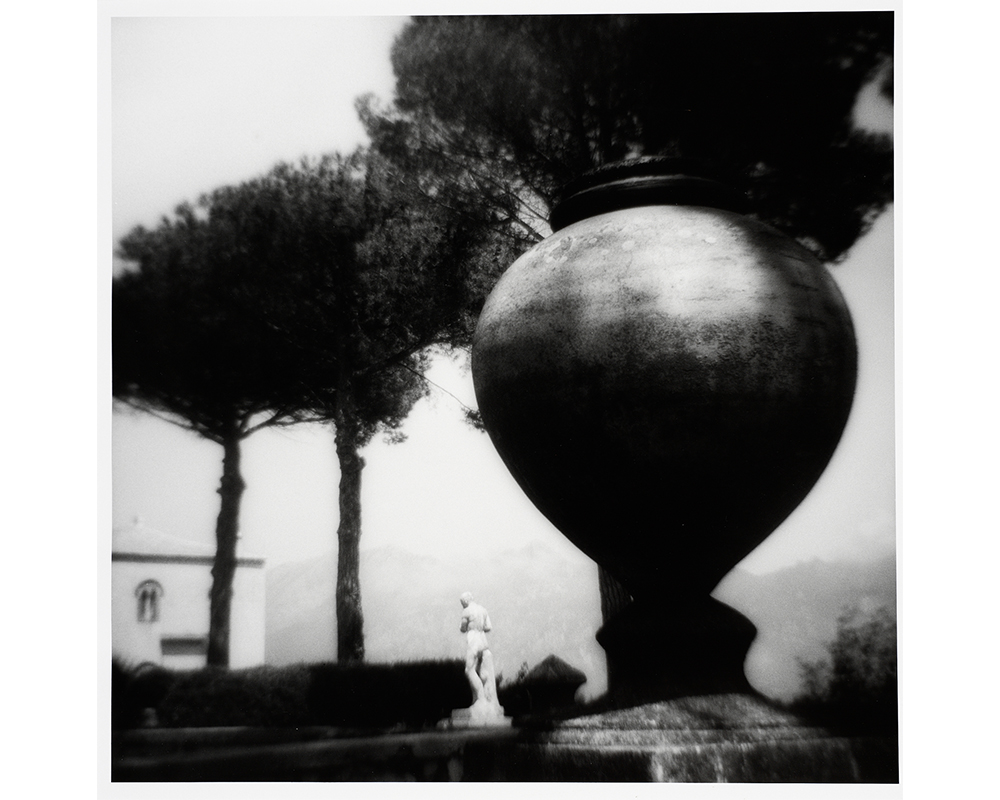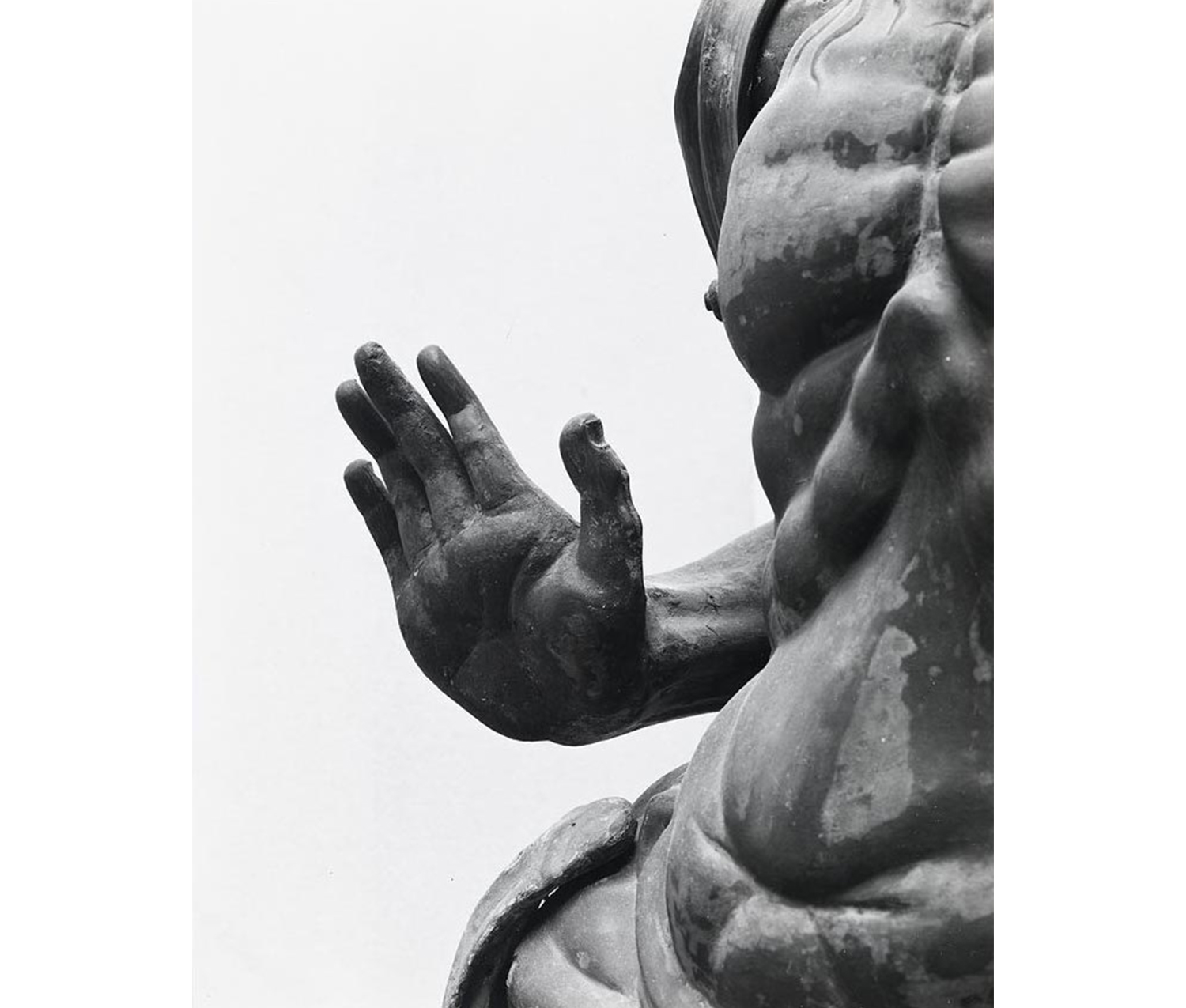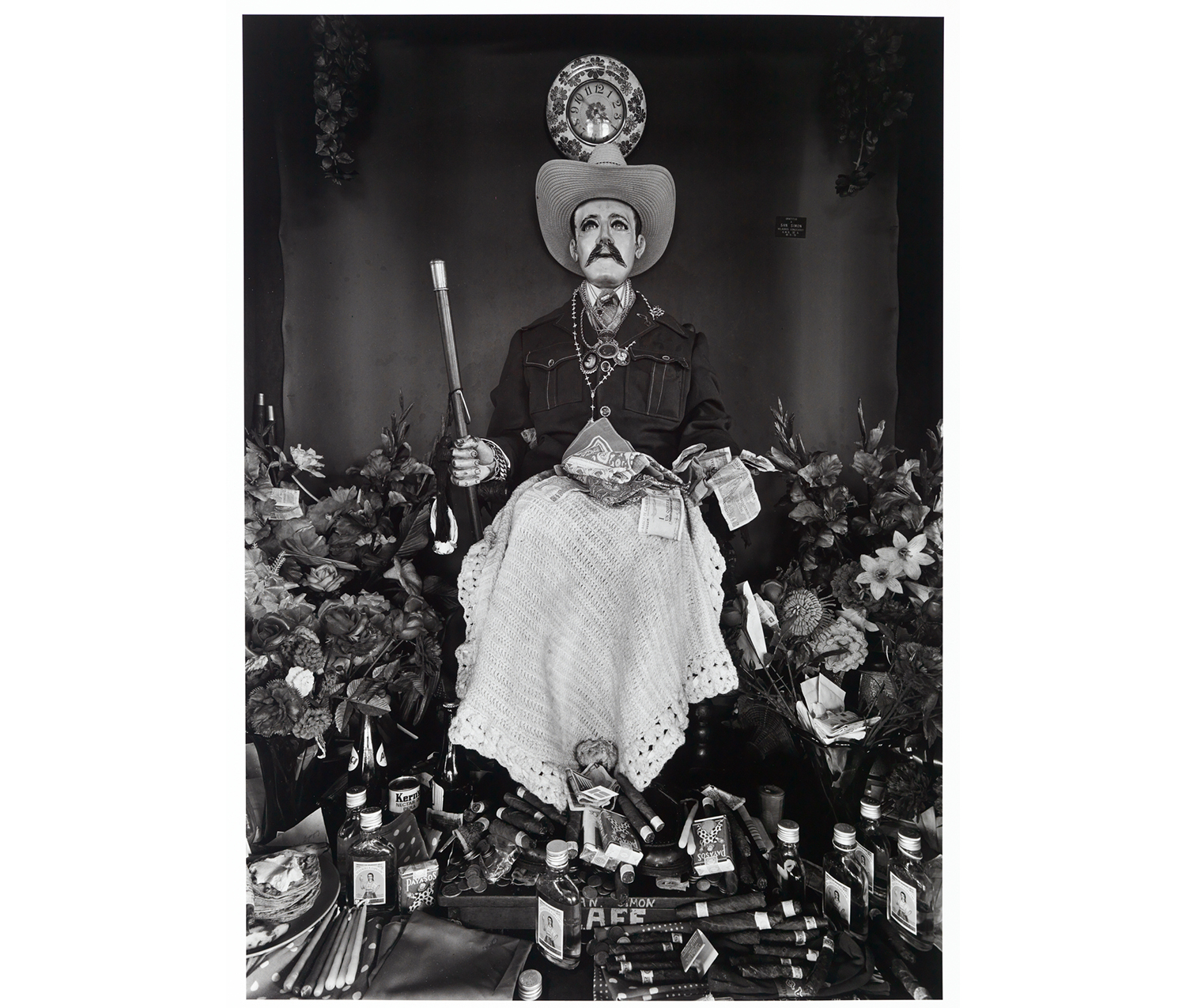
Uncanny Valley: Portraits of the Almost-Human
Colleen McDermott is the Brown Post-Baccalaureate Curatorial Fellow in the Cunningham Center.
As many of you may have noticed, last month my first exhibition, Uncanny Valley: Portraits of the Almost-Human went up on view at the museum! I’ve been excited about this project for a while. When looking through the Works on Paper collection, I found myself drawn to works that were a bit ambiguous and eerie, eventually landing in the realm of sculpture photography.
The more realistic an image is, the more viewers tend to identify with it—up to a certain point. Lifelike sculptures often have a peculiar, unsettling quality, occupying a perceptual and emotional space known as the “uncanny valley.” This term first appeared in 1978 in Robots: Fact, Fiction, and Prediction by Jasia Reichardt and refers to the unease experienced in the presence of a human facsimile or look-alike, for instance in robotics or in computer animations. But what happens when photographers treat these figural objects as if they were living human subjects?

Clarence Kennedy. American, 1892–1972. Kongō Rikishi (Buddhist Guardian Gods, Sanskrit: Vajirapani; mid-13th century), ca. 1951. Gelatin silver print double mounted on paper. Gift of Mrs. Edwin H. Land. SC 1996.22.31.
Sculpture photography is an inherently difficult genre, as something is always lost when taking a two-dimensional image of a three-dimensional object. But something new can be gained as well. These stand-ins for human beings—from dolls to votive figures and beyond—were created for a specific purpose, whether to advertise, to entertain, or even to inspire and honor. However, the act of photographing them allows for more complicated alternatives to arise. While people are occasionally visible in these photographs, they generally serve as accessories to their inanimate counterparts.
This installation aims to capture the stark and strangely intimate world of human facsimiles. From the coy disaffection of fashion mannequins, to the spectacle of religious shrines, to the likeness of Lady Liberty herself, the way in which these figures were photographed gives life to the not-quite-living.

Daniel Chauche. French-American, born 1951. San Simón, San Andres Itzapa, from La Santeria Chapina. (Volume I, Folio 9 of 12), 1978 negative; 2011 print. Gelatin silver print. Purchased with the Margaret Walker Purinton Fund. SC 2012.19.3.
In his series La Santeria Chapina, photographer Daniel Chauche explores the complex spirituality of Guatemala through its diverse shrines and altars. Also known as Maximón, San Simón is a folk saint venerated in the highlands of western Guatemala. The story of Simón—likely an adaptation of earlier Mayan legends—was that he was a local priest, good-hearted but with a love for drinking and womanizing. Though the Catholic Church eventually excommunicated him for his vices, he was beloved by the community, and started his own church that became even more popular than the original. In deference to his less-than-saintly behavior, Simón’s effigies are dressed like cowboys or bandits, and traditional offerings include cigars and alcohol.
Uncanny Valley will be on view in the Cunningham Corridor until May 13. I hope you have the chance to see it!